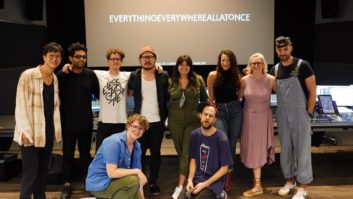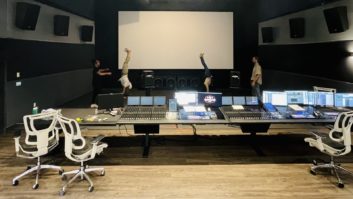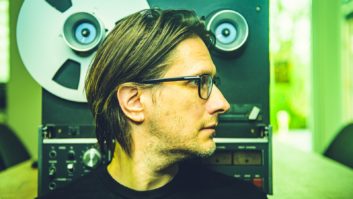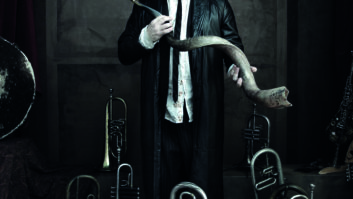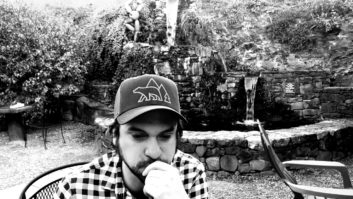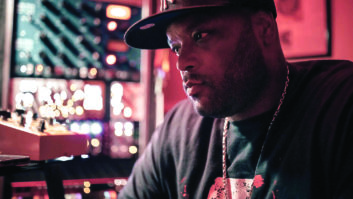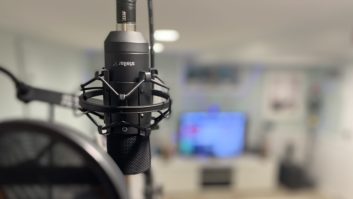

The “group” is called Five for Fighting, a term that comes from the world of hockey, as in a five-minute penalty for fighting. But in truth, Five for Fighting is, for all intents and purposes, one man: singer/songwriter John Ondrasik, who’s more likely to get five for being sensitive than for high-sticking. (Okay, jokes aside, he is a serious sports fan; so much so he writes a column on hockey for Sports Illustrated.) Over the course of four albums since Five for Fighting’s 1997 debut album, Ondrasik has established himself as an artist with a distinctive songwriting (and actual) voice. He’s been variously compared to Billy Joel, Elton John and other piano-based artists he freely admits were influences, but he has also succeeded in carving out a niche of his own — his sound is instantly recognizable.
It was twist of fate that first thrust Ondrasik, a Southern California native, into the pop mainstream: After the terrorist attacks of September 11, 2001, Five for Fighting performed a tender, bittersweet ballad called “Superman (It’s Not Easy)” at the Concert for New York City, and the song immediately took off and became a multiformat hit, propelling the 2000 album from which it was drawn, America Town, to Platinum status. Ondrasik has built on that devoted fan base ever since, and put out two more albums: The Battle for Everything (2004) and the latest (and in my view, best) Five for Fighting opus, Two Lights. The album has already spawned one adult pop/AAA hit, “The Riddle,” and there are a number of other excellent songs that could find their way onto various types of playlists, from the anthemic “Johnny America” to “World,” with its philosophical musings, or his beautiful ode to his young daughter, “I Just Love You.” It’s a richly textured affair, with unobtrusive strings gliding through many songs, tasteful guitars and the solid keyboard underpinnings that so nicely match Ondrasik’s vocals, which stretch from a baritone to an effective falsetto in great swoops.
“It was a really hard record to make and I’m proud of the fact that we did it ourselves,” Ondrasik says by phone one late-fall afternoon from San Diego [Calif.], where he and his four-piece band were gigging. Ondrasik has always been interested in recording and has been more and more involved with the making of each of his albums.
“The first record I made, Message for Albert, came and went because EMI Records closed. On your first record, you’re just so happy to be there; you’re not necessarily paying attention to engineering or crafting or production. I was just thrilled to be making a record. When I made America Town with [producer and multi-instrumentalist] Gregg Wattenberg, it was one of those very low-budget records. We were going into the studio at two in the morning just to get the low rates and we spent a year doing it by ourselves. The mics were breaking; we had a lot of bugs. We did it in various studios — like Mad Dog in Burbank. We had no money and we were just kind of swimming upstream, but we didn’t know any better. That process of being in the studio and crafting songs was like breaking the ice.”
Some high-powered mixers, such as Bob Clearmountain, Frank Filipetti and Jack Joseph Puig, were brought in to polish some of the tracks on that disc, “but that came after the fact,” Ondrasik says. “When the label smelled a hit, they brought them in.” And the success of “Superman” justified their investment.

“Then the next record, after I’d had a little success, was completely opposite,” Ondrasik continues. “Budget was not an issue, and we got to do whatever we wanted, so we ran up to one of the masters, [producer] Bill Bottrell, and I learned a lot from Bill. Without him, I don’t think I could’ve produced this new record myself. Being a producer, but also a songwriter, a musician and engineer, Bill understands all those aspects and the process of cutting song by song — it may sound a little trivial, but it’s a huge difference from spending two weeks cutting drums, two weeks cutting guitar, do vocals and mix. Bill’s process was put the band in the room, get a wonderful headphone mix so you’re inspired and then go for it — you really feel like you’re making the record as you’re recording. You’re locked up in the middle of nowhere up in Mendocino [several hours north of San Francisco]. He put a studio in an old paper-manufacturing plant. The board was in the room, and we cut it song by song and the red light was always on.
“I learned so much from that process, and that’s one reason why this record was such a challenge. This time around, there was no big budget — big budgets don’t exist any more, no matter how many records you sell, and I was intent on having the same process, where the band was in the room, we were always recording, we would take a few days on a song, have the ability to go back to the drawing board, revisit songs, cut 20 songs and have a six- or seven-month process, which frankly you can’t do in a $2,000 room at Ocean Way anymore. I had to buy my own studio. I spent a year searching and scouring for gear, and I found a room up in Ojai [near Santa Barbara] that had a great old Neve board, vintage 1073 [mic pre’s], a great bunch of outboard gear, including a stereo Fairchild compressor, and an incredible mic collection. I ended up buying the whole thing. So we pulled all the 1073s out, racked ’em up, but we still needed a space [in L.A.]. Well, we had a friend who had a space called Revolver Studios in Westlake, so we went in there, built a piano booth, brought all the gear in and we set up. We were no longer hostage to the high day-rate. We took the band there and spent six months making that record. We ended up sort of producing it ourselves by default. Bill [Bottrell] was busy, so we just kind of started and went from there.
“Producing vocals was the hardest,” he continues, “because I’m in the booth singing at a time when you want to be thinking about nothing but projecting the song or interpreting the song, but there’s the little guy with the hat on in the back of your mind saying, ‘You’re overselling it; you’re a little out of tune; maybe we can comp that with the previous vocal.’ When I was producing other musicians, it was a little easier, but it was still hard beyond the logistical side of production — the emotional side, writing the songs, the crafting of the record; it was really tough. Of course, the positive side is your vision is undiluted.
“You’ve got to know what your limitations are, and I know I’m not a good engineer, and [bassist and guitarist] Curt [Schneider] can engineer, so that took a big weight off my shoulders. Then there were a couple of songs I thought we didn’t get all the way, so Mark Endert came in and not only mixed the record, but also helped produce a couple of songs.”
Ondrasik says that some songs were virtually live takes, while others were “crafted to death. ‘The Riddle’ is one: Every kick drum is placed, but it started as a piano/vocal demo. It had a good vibe to it, so we decided to build on it. You have to be prepared to go both routes. You can spend a lot of time chasing that magical demo, but you can’t recapture magic. You can get maybe 80 percent of it. That’s why you have to be set up to get it all.”
In this case, it was having Pro Tools running constantly — recording every idea from beginning to end — that gave Ondrasik the options he needed to construct the record he wanted. “We could never have made this record without that technology,” he says. “What we did was all three of us [Ondrasik, Schneider and guitarist Andrew Williams] got compatible HD systems, so at night Curt would go home and comp [Joey Waronker’s] drum tracks, Andrew would do clean-up sessions and I would do vocals in my living room. Then the next day we’d all come in and we’d transfer all the files to everyone’s hard drives. Economically, logistically, time-wise, we could not have done it without that ability. We probably saved a week in rewind time alone,” he says with a laugh.
As for the strings on this and other Five for Fighting albums, Ondrasik says he was influenced by the work of such arrangers as Paul Buckmaster (the early Elton John records), Bob Alcivar (Tom Waits’ Heart of Saturday Night), George Martin (The Beatles) and others.
“It’s always a dangerous road to walk because it’s so easy to go over the top — this record in particular,” he notes. “Because there were so many strings on it, I didn’t want to go string crazy. So how do you treat them? Some it’s a combination of my demo [synth] strings with live strings. I try to arrange them all myself and then I sit back, and say, ‘That’s okay, but that one needs somebody better.’ So that’s when you take an arrangement to someone like David Campbell and he can embellish it for you. And I also went to Jorge Del Barrio, a Brazilian orchestrator I found through Bill Bottrell, for a couple of songs where I knew that strings were going to be crucial to the emotional content of those tunes. I’m really happy with how it all came out.”

Click here for audio clip from Five for Fighting, George Jones and Merle Haggard.
